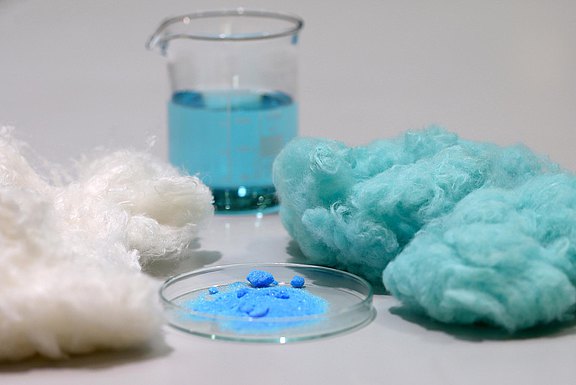The field of fibre development includes the forming of polymers such as cellulose and its derivatives, proteins, but also polyacrylonitrile, polyvinyl alcohol and thermoplastic polymers into fibres, filaments or nonwovens.
In the field of cellulose forming, cellulose from natural sources (spruce, beech, hemp, cotton linters, etc.) or, as part of the circular economy, from recycled old textiles can be used. The development of functionalised cellulose fibres by loading them with additives in particulate or liquid form is a major focus of our work. In the past, it was possible to permanently produce fibres with antibacterial, skin-care, electrically conductive or thermoregulating properties, as well as ceramic fibres and bristles based on the lyocell process.
Subdivisions
- Technology developments for the production of man-made fibres
- Development of fibres according to the wet or dry wet spinning process (air gap spinning)
- Development of functionalised fibres
- Development of nanofibre nonwovens on the basis of electrospinning
- Development of spunbonded nonwovens from low-melting special polymers
- Carbon fibre developments based on PAN and alternative precursors
Technical equipment
Plant technology for the production of spinning solutions, fibres, filaments and nonwovens in various scales
o Spinning stands in laboratory, pilot plant and pilot scale (fibre quantities up to more than 100 kg per week)
o Module for wet and dry drawing
o Meltblown plants for forming fusible polymers into nonwovens
o Electrospinning plant, jetlessAnalytics for pulp and spinning solution characterisation
o Capillary viscometer
o Rotation/oscillation rheometer
o Particle sizer
o Determination of particle concentration
o Digital microscopy- Dry and wet mills for aggregates / additives
Carbonisation plant with 2-zone oxidation furnace as well as LT and HT furnace up to
1600 °C
